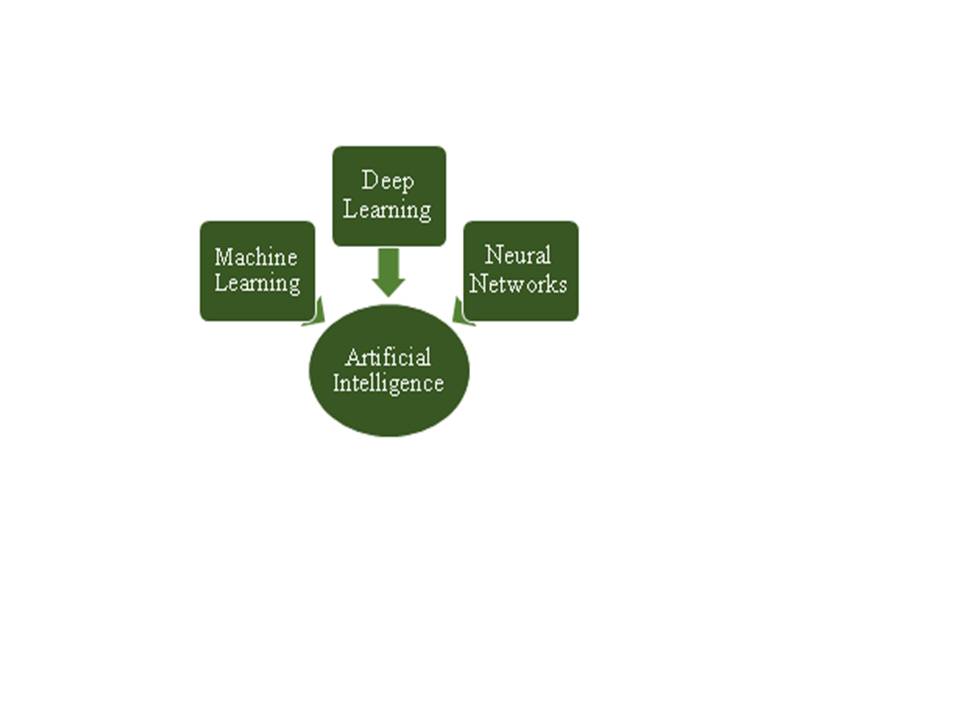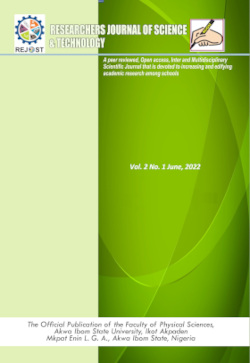Evaluating the Impact of Artificial Intelligence on Medical Physics: A Review
Keywords:
Medical physics, Artificial intelligence, Imaging, DiagnosisAbstract
Artificial Intelligence (AI) has proven to be a source of innovation in all aspects of technological, scientific, and medical advancement, Medical Physics is not excluded, driving advancements in medical imaging, treatment planning, diagnostics, and patient outcomes. . This study reviews the impact of AI on medical physics, with an analysis of recent developments and their clinical implications. A thorough search was conducted across multiple databases, including Google Scholar, PubMed, ResearchGate, and IEEE Xplore. The search was conducted using keywords related to AI and medical physics, including "artificial intelligence," "machine learning," "deep learning," "medical imaging," "treatment planning," "diagnostics," and "patient outcomes”. The search focused on studies published from 2016 to 2024 that examine the implementation and effectiveness of AI technologies. This review highlights AI's ability to transform medical physics, especially in the aspects of medical imaging, diagnosis, treatment planning, and patient outcomes, emphasizing the need for continued research and integration of AI technologies in clinical practice. The study suggests future research in the area of data privacy concerns and standardized protocols, to fully harness AI's benefits in medical physics.
References
Avanzo, M., Porzio, M., Lorenzon, L., Milan, L., Sghedoni, R., Russo, G., Massafra, R., Fanizzi, A., Barucci, A., Ardu, V., Branchini, M., Giannelli, M., Gallio, E., Cilla, S., Tangaro, S., Lombardi, A., Pirrone, G., De Martin, E., Giuliano, A., Belmonte, G., Russo, S., Rampado, O., Mettivier, G. (2021). Artificial intelligence applications in medical imaging: A review of the medical physics research in Italy. Physica Medica, 83, 221-241. https://doi.org/10.1016/j.-ejmp.2021.04.010
Beckers, R., Kwade, Z., Zanca, F. (2021). The EU medical device regulation: Implications for artificial intelligence-based medical device software in medical physics. Physica Medica, 83, 1-8. https://doi.org/10.1016/j.ejmp.2021.02.011
Boldrini, L., Bibault, J. E., Masciocchi, C., Shen, Y., & Bittner, M. I. (2020). Deep learning: A review for the radiation oncologist. Frontiers in Oncology, 9, 977.https://doi.org/10.3389/fonc.2019.00977
Bosmans, H., Zanca, F., Gelaude, F. (2021). Procurement, commissioning, and QA of AI-based solutions: An MPE's perspective on introducing AI in clinical practice. Physica Medica, 83, 257-263. https://doi.org/10.1016/j.ejmp.2021.04.006
Buls, N., Watte, N., Nieboer, K., Ilsen, B. & de Mey, J. (2021). Performance of an artificial intelligence tool with real-time clinical workflow integration – detection of intracranial hemorrhage and pulmonary embolism. Physics in Medicine; 83:154–60. https://doi.org/10.1016/j.-ejmp.2021.03.015
Diaz, O., Kushibar, K., Osuala, R., Linardos, A., Garrucho, L., Igual, L., Radeva, P., Prior, F., Gkontra, R. &Lekadir, K. (2021). Data preparation for artificial intelligence in medical imaging: a comprehensive guide to open-access platforms and tools. Physica Medica, 83, 25-37. https://doi.org/10.1016/j.ejmp.2021.02.007
Dong, P. & Xing, L. (2020). Deep DoseNet: a deep neural network for accurate dosimetric transformation between different spatial resolutions and/or different dose calculation algorithms for precision radiation therapy. Physics in Medicine & Biology, 65(3):035010. https://doi.org/10.1088/1361-6560/ab652d
Esteva, A., Kuprel, B., Novoa, R. A., Ko, J., Swetter, S. M., Blau, H. M.& Thrun, S. (2017). Dermatologist-level classification of skin cancer with deep neural networks. Nature, 542(7639), 115-118. https://doi.org/10.1038/nature21056
Fan, J., Xing, L., Dong, P., Wang, J., Hu, W. & Yang, Y. (2020). Data-driven dose calculation algorithm based on deep U-Net. Physics in Medicine and Biology, 65(24):245035. doi:10.1088/1361-6560/-abca05
Funama, Y., Oda, S., Kidoh, M., Nagayama, Y., Goto, M., Sakabe, D.&Nakaura, T. (2021). Conditional generative adversarial networks to generate pseudo low monoenergetic CT image from a single-tube voltage CT scanner. Physica Medica, 83, 46-51. Doi: 10.1016/j.ejmp.-2021.02.015
Gullo, R.O., Marcus, E., Huayanay, J., Eskreis-Winkler, S., Thakur, S., Teuwen, J. & Pinker, K. (2024). Artificial Intelligence-Enhanced Breast MRI Applications in Breast Cancer Primary Treatment Response Assessment and Prediction. Investigative Radiology, 59(3), 230-242. DOI: 10.1097/RLI.0000000000001010
Hedden, N. & Xu, H. (2021). Radiation therapy dose prediction for left-sided breast cancers using two-dimensional and three-dimensional deep learning models. Physica Medica, 83, 101-107. https://doi.org/10.1016/j.ejmp.2021.02.021
Huang, C., Nomura, Y., Yang, Y.& Xing, L. (2022). Meta-optimization for fully automated radiation therapy treatment planning. Physics in Medicine & Biology, 67(5) 055011. Doi:10.1088/1361-6560/ac5672
Huang, C., Yang, Y. & Xing, L. (2021). Fully automated noncoplanar radiation therapy treatment planning. Medical Physics, 48(11):7439–7449. Doi:10.1002/mp.15223.
Jha, S.& Topol, E. J. (2016). Adapting to artificial intelligence: Radiologists and pathologists as information specialists. JAMA, 316(22), 2353-2354. https://-doi.org/10.1001/jama.2016.17438
Jones, S., Thompson, K., Porter, B., Shepherd, M., Sapkaroski, D., Grimshaw, A. & Hargrave, C. (2024). Automation and artificial intelligence in radiation therapy treatment planning. Journal of Medical Radiation Sciences, 71, 290-298. Doi: 10.1002/jmrs.729
Liu, J., Xiao, H., Fan, J., Hu, W., Yang, Y., Dong, P., Xing, L.& Cai, J. (2023). An overview of artificial intelligence in medical physics and radiation oncology. Journal of the National Cancer Center, 3(3), 211-221. https://doi.org/10.1016-/j.jncc.2023.08.002
Liu, Z., Liu, F., Chen, W., Tao, Y., Liu, X., Zhang, F., Shen, J., Guan, H., Zhen, H., Wang, S., Chen, Q., Chen, Y.& Hou, X. (2021). Automatic segmentation of clinical target volume and organs-at-risk for breast conservative radiotherapy using Convolutional Neural Network. Cancer Management and Research, 2021:13, 8209-8217
Litjens, G., Kooi, T., Bejnordi, B. E., Setio, A. A. A., Ciompi, F., Ghafoorian, M., Van Ginneken, B., Van der Laak, J. A. W. M.& Sanchez, C. I. (2017). A survey on deep learning in medical image analysis. Medical Image Analysis, 42, 60-88. https://doi.org/10.1016/j.media.2017.07.005
Ma, M., Kovalchuk, N., Buyyounouski, MK., Xing, L.& Yang, Y. (2019). Incorporating dosimetric features into the prediction of 3D VMAT dose distributions using deep convolutional neural network. Physics in Medicine & Biology, 64(12):125017. Doi: 10.1088/1361-6560/ab2146
McCarthy, N., Dahlan, A., Cook, T. S., Hare, N. O., Ryan, M. L., St. John, B., Lawlor, A. & Curran, K. M. (2021). Enterprise imaging and big data: A review from a medical physics perspective. Physica Medica, 83. Doi: 10.1016/j.ejmp.-2021.04.004
McKinney, S. M., Sieniek, M., Godbole, V., Godwin, J., Antropova, N., Ashrafian, H., Back, T., Chesus, M., Corrado, G. S., Darzi, A., Etemadi, M., Garcia-Vicente, F., Gilbert, F. J., Halling-Brown, M., Hassabis, D., Jansen, S., Karthikesalingam, A., Kelly, C. J., King, D., Ledsam, J. R., Melnick, D., Mostofi, H., Peng, L., Reicher, J. J., Romera-Paredes, B., Sidebottom, R., Suleyman, M., Tse, D., Young, K. C., De Fauw, J. & Shetty, S. (2020). International evaluation of an AI system for breast cancer screening. Nature, 577(7788), 89-94. https://doi.org/10.1038/s41586-019-1799-6
Men, K., Dai, J. & Li, Y. (2017). Automatic segmentation of the clinical target volume and organs at risk in the planning CT for rectal cancer using deep dilated convolutional neural networks. Medical Physics, 44(12):6377–6389. https://doi.-org/10.1002/mp.12602
Men, K., Chen, X., Zhang, Y., Zhang, T., Dai, J., Yi, J.& Li, Y. (2017). Deep Deconvolutional Neural Network for Target Segmentation of Nasopharyngeal Cancer in Planning Computed Tomography Images. Front Oncology, 7:315. https://doi.org/10.3389/fonc.-2017.00315
Montalt-Tordera, J., Muthurangu, V., Hauptmann, A.&Steeden, J. A. (2021). Machine learning in magnetic resonance imaging: image reconstruction. Physica Medica, 83, 79-87. https://doi.org/-10.1016/j.ejmp.2021.02.020
Morley, J., Machado, C. C. V., Burr, C., Cowls, J., Joshi, I., Taddeo, M.& Floridi, L. (2020). The Ethics of AI in Health Care: A Mapping Review. Social Science & Medicine. 260: 113172. Doi: 10.1016-/j.socscimed.2020.113172.
Nemirovsky-Rotman, S. & Bercovich, E. (2024). Explicit Physics Informed Deep Learning for Computer-Aided Diagnostic Tasks in Medical Imaging. Machine Learning & Knowledge Extraction. 6, 385–401. https://doi.org/10.3390/make6010019
Nguyen, D., Long, T., Jia, X., Lu, W., Gu, X., Iqbal, Z. & Jiang, S. (2019). A feasibility study for predicting optimal radiation therapy dose distributions of prostate cancer patients from patient anatomy using deep learning. Scientific Reports, 9(1), 1076. Doi: 10.1038/s41598-018-37186-x
Nousiainen, K., Mäkelä, T., Piilonen, A.&Peltonen, J. I. (2021). Automating chest radiograph imaging quality control. Physica Medica, 83, 138-145. https://doi.org/10.1016/j.ejmp.2021.03.014
Obermeyer, Z.& Emanuel, E. J. (2016). Predicting the future—big data, machine learning, and clinical medicine. The New England Journal of Medicine, 375(13), 1216-1219. https://doi.org/10.1056-/NEJMp1606181
Papadimitroulas, P., Brocki, L., Christopher Chung, N., Marchadour, W., Vermet, F., Gaubert, L., Eleftheriadis, V., Plachouris, D., Dimitris, V., Kagadis, G.C.& Hatt, M. (2021). Artificial intelligence: deep learning in oncological radiomics and challenges of interpretability and data harmonization. Physica Medica, 83, 108-121. https://doi.org/10.1016/j.ejmp.-2021.03.009
Rajpurkar, P., Irvin, J., Ball, R. L., Zhu, K., Yang, B., Mehta, H., Duan, T., Ding, D., Bagul, A., Langlotz, C., Patel, B. N., Yeom, K. W., Shpanskaya, K., Blankenberg, F. G., Seekins, J., Amrhein, T.J., Mong, D.A., Halabi, S.S., Zucker, E.J., Ng, A.Y.& Lungren, M.P.(2018). Deep learning for chest radiograph diagnosis: A retrospective comparison of the CheXNeXt algorithm to practicing radiologists. PLoS Medicine, 15(11), e1002686. https://doi.org/10.1371/-journal.pmed.1002686
Reddy, S., Allan, S., Coghlan, S.& Cooper, P.(2020). A Governance Model for the Application of AI in Health Care. JAMIA. 27(3): 491-497. DOI: 10.1093/jamia/ocz192
Ricciardi, R., Mettivier, G., Staffa, M., Sarno, A., Acampora, G., Minelli, S., Santoro, A., Antignani, E., Orientale, A., Pilotti, I.A.M., Santangelo, V., D’Andria, P. & Russo, P.(2021). A deep learning classifier for digital breast tomosynthesis. Physica Medica, 83, 184-193. https://doi.org/10.1016/j.ejmp.2021.03.021
Ritz, B., Brat, H., Zille, P., Guillin, R., Pouchy, C., Adam, C., Ardon, R.& d’Assignies, G.(2021). Meniscal lesion detection and characterization in adult knee MRI: a deep learning model approach with external validation. Physica Medica, 83, 64-71. https://doi.org/10.1016/j.ejmp.-2021.02.010
Shickel, B., Tighe, P. J., Bihorac, A.& Rashidi, P.(2018). Deep EHR: A Survey of Recent Advances in Deep Learning Techniques for Electronic Health Record (EHR) Analysis. IEEE Journal of Biomedical and Health Informatics.22(5): 1589-1604. Doi: https://10.1109/JBHI.2017.2767063.
Tomal, A. & Massera, R. T. (2021). Breast glandularity and mean glandular dose assessment using a deep learning framework: Virtual patients study. Physica Medica, 83, 264-277. https://doi.org/10.1016/j.ejmp.2021.03.007
Topol, E. J. (2019). High-performance medicine: The convergence of human and artificial intelligence. Nature Medicine, 25(1), 44-56. https://doi.org/10.1038/s41591-018-0300-7
Zanca, F., Avanzo, M., Colgan, N., Crijns, W., Guidi, G., Hernandez-Giron, I., Kagadis, G.C., Diaz, O., Zaidi, H., Russo, P., Toma-Dasu, I.& Kortesniemi, M. (2021). Focus issue: Artificial intelligence in medical physics. Physica Medica: European Journal of Medical Physics, 83, 287-291. https://doi.org/10.1016/j.ejmp.-2021.05.008
Zegers, C. M. L., Posch, J., Traverso, A., Eekers, D., Postma, A. A., Backes, W., Dekker, A.& Van Elmpt, W. (2021). Current applications of deep-learning in neuro-oncological MRI. Physica Medica, 83, 161-173. https://doi.org/10.1016/j.ejmp-.2021.03.003
Zhang, Q., Hu, Y., Zhou, C., Zhao, Y., Zhang, N., Zhou, Y., Yang, Y., Zheng, H., Fan, W., Liang, D. & Hu, Z. (2024). Reducing pediatric total body PET/CT imaging scan time with multimodal artificial intelligence technology. EJNMMI Physics, 11(1). https://doi.org/10.1186/-s40658-023-00605-z
Zhou D, Nakamura M, Mukumoto N, Yoshimura, M. & Mizowaki, T. (2022). Development of a deep learning-based patient-specific target contour prediction model for markerless tumor positioning. Medica Physica, 49(3):1382–1390. https://doi.org/10.1002/mp.15456
Zhou, S. K., Greenspan, H., Davatzikos, C., Duncan, J. S., Van Ginneken, B., Madabhushi, A., Prince, J. L., Rueckert, D.& Summers, R. M. (2021). A Review of Deep Learning in Medical Imaging: Imaging Traits, Technology Trends, Case Studies with Progress Highlights, and Future Promises.Proceedings of the IEEE. 109(5): 820-838. DOI: 10.1109/JPROC-.2021.3054390
Xing, L., Giger, ML. & Min, JK. (2021). Artificial Intelligence in Medicine. Academic Press.

Downloads
Published
How to Cite
Issue
Section
License
Copyright (c) 2024 Researchers Journal of Science and Technology

This work is licensed under a Creative Commons Attribution-NonCommercial-NoDerivatives 4.0 International License.




